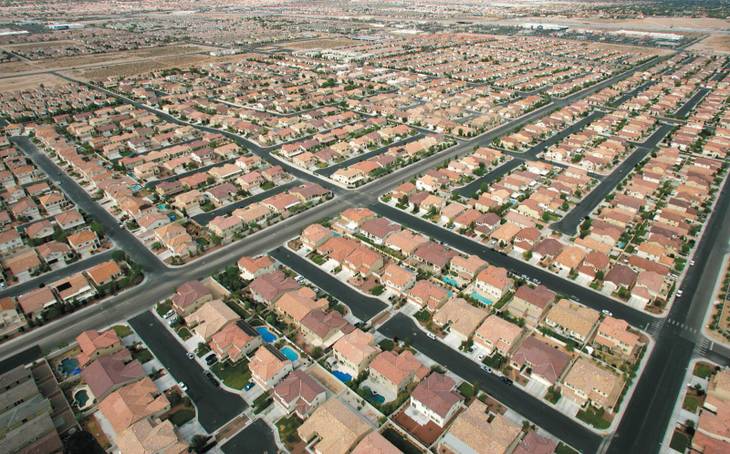VEGAS INC archives
A new study confirms the big role investors, including "house flippers," played in Nevada’s home price run-up and its subsequent near collapse.
Researchers at the Federal Reserve Bank of New York last week reported that their study "revealed some astonishing facts" confirming that in four states hit hard by the real estate meltdown, investors played a disproportionate role in inflating prices to unsustainable levels.
Those states are Nevada, Arizona, California and Florida. Investors are those buying homes intending to rent them out and hoping prices rise over time — or those planning to simply "flip" houses, i.e. selling quickly and reaping a quick profit, the Fed report noted.
Keeping in mind that when home prices fall investors are more likely to default on mortgages than are owner-occupants, the Fed report found:
• At the peak of the boom in 2006 and 2007, about 35 percent of U.S. new-purchase mortgage loan dollars were going to people who already owned at least one house. In Nevada and the three other hard-hit states, that percentage was about 45 – up from about 25 percent in 2000.
• Investors owning three or more properties were responsible for 20 percent of loan originations in 2006 in Nevada and the three other hard-hit states, almost triple their share in 2000.
• Investors nationwide were more likely than owner-occupants to have received nonprime loans, or loans with low down payments and high interest rates. About 25 percent of such borrowing nationwide at the end of 2006 involved borrowers with three or more properties vs. 35 percent in Nevada and the three other hard-hit states.
The collapse of the housing bubble, as expected, then led investors to default at high rates both nationwide and in the hard-hid states, the study found.
By the fourth quarter of 2008, investors’ share of seriously delinquent mortgage balances was about 31 percent nationwide vs. about 36 percent in Nevada and the three other hard-hit states, the report found.
“The availability of low- and no-down-payment mortgages in the nonprime sector enabled investors to make these (housing price) bets,” the report says. “This may have allowed the bubble to inflate further, which caused millions of owner-occupants to pay more if they wanted to buy a home for their family. In the end, even the value of the 20 percent down-payments made by responsible, prime borrowers was wiped out — leaving the housing market, and the economy, in the vulnerable state we find them in today.”
In Nevada, the collapse has led to home prices in the Las Vegas area declining to levels last seen in February 1998 and to the state perennially leading the nation in foreclosure activity.
Home price inflation also appears to have been driven by misrepresentations in which investors falsely said they would be owner occupants, the Fed study suggested.
An area not examined in the Fed study is that the bubble was also inflated by irresponsible and predatory lending by some lenders to owner occupants who often, in hindsight, shouldn’t have qualified for mortgages and now have high default rates.
This was confirmed by the U.S. Financial Crisis Inquiry Commission as well as lawsuits by Nevada’s Attorney General over allegedly deceptive lending against lenders including Countrywide and homebuilder Pulte Home Corp.
And, ironically, the Financial Crisis Inquiry Commission found in its report issued in January that the Federal Reserve – among other agencies – had failed to deal with irresponsible lending during the economic boom despite warnings that it wasn’t sustainable.
“There were warning signs,” the panel concluded in its report last year. “The prime example is the Federal Reserve’s pivotal failure to stem the flow of toxic mortgages, which it could have done by setting prudent mortgage-lending standards. The Federal Reserve was the one entity empowered to do so and it did not.”
